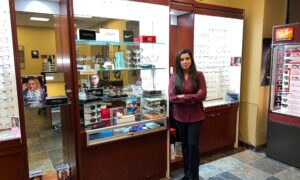May 14, 2019
By Gary Gerber, OD
Co-Founder, Treehouse Eyes
“Mom, you’re right. Your son does need braces to straighten his teeth,” said the orthodontist.
“I guess I always knew this day would come. His older sister needed them, and it seems like all the kids in his class have them. I just didn’t think he’d need them so soon,” mom replied.
“We’re finding the sooner we intervene, the better the results we get. Someone from my staff will discuss the next steps with you. Things like scheduling, payments, etc. Sit tight. They’ll be right in,” said the doctor as he walked out the door.
Ten minutes later, the mom commits to a $5,500 two-year treatment plan and is concerned how the family budget, already seemingly at the breaking point from other commitments, will handle an expense she expected wouldn’t happen for another three years.
I’m not here to write about orthodontic practice management. Instead, the above is a striking example filled with the EXACT reasons why optometry struggles to answer the omnipresent question, “Why haven’t I heard about this before?” In our case, “this” refers to myopia management.
You would think with more than 25 percent of kids in the U.S. already being myopic, with that number increasing daily, and close to 100 percent of parents believing (right or wrong) that their kids’ excess digital device use absolutely causes myopia, and with more than 40,000 ODs schooled in the eye-health consequences of myopia, that parents would come in begging for us to treat their kids! Rather, anyone who has ever attempted to treat a myopic child knows it’s just a matter of time until you hear the question, “Why haven’t I heard about this before?”
The core difference between orthodontics and myopia management is that braces for teens are a fait accompli. The reason that is true is because braces have been around longer and become the expectation or norm for young teens. But why have braces become the norm and myopia management hasn’t? Dentistry long ago accepted orthodontics as the essential requisite method to straighten kids’ teeth. When the orthodontist says, “You’re right. Your son needs braces” there is no educating parents as to why. With 30 percent of kids in the U.S. in braces and less than 1 percent in myopia management treatment, it’s easy to see why moms have heard of the former and not the latter. Our industry has queued up only one expectation for the parents of our myopic kids. Their kids will eventually wear eyeglasses.
Next, the fees for braces are expected by parents. With so many kids already in braces, there’s a reasonable expectation of what the fees will be. And the doctor and his staff are non-apologetic and matter of fact when presenting the fees. “Your kids need braces” is very different than, “You should take your time thinking about getting him braces because they are quite expensive.” In our case, the fees charged for myopia management services are customarily markedly higher than a pair of eyeglasses. Parents have an expectation of what glasses cost and use that as the reference point for myopia treatment fees.
What the above reasons have in common is an education gap. Parents don’t’ know what “myopia” is (and calling it nearsightedness makes things worse), let alone that it should be treated and is indeed treatable.
Close the education gap the same way you sell glasses to presbyopes – immerse the practice in all things myopia
Why is telling a presbyope you have an available eyeglass solution so easy to discuss and so easy for the presbyope to understand? When presbyopes enter your practice, it is immediately apparent you offer optical solutions. OD offices bombard patients with a loud and clear message, “We sell eyeglasses here to fix vision problems.” Therefore, when an eyeglass solution is required, doctors are comfortable discussing it, and it makes sense to patients that glasses are a viable solution to their reading problems.
In building Treehouse Eyes, we saw many doctors struggling to incorporate myopia management into their practices with the same level depth and confidence as presbyopia eyeglasses. There was no “immersion into myopia” for parents of myopic kids. This led to parents hearing about myopia treatment for the very first time – ever – in the examination room. After building several centers exclusively dedicated to myopia treatment for kids, I can assure you that a counter card sitting behind three others in your waiting room or a poster that has become hallway white noise is not enough to raise the level of awareness that your practice is THE place for expert myopia care! To get to that point you need to elevate awareness to the same degree your presbyopes see! Here are six steps to do that:
- Reposition your thinking on myopia as the critical disease state that it is. Myopia isn’t normal. Yes, a -1.00 57-year-old patient has some functional advantages but remember – we’re not supposed to be myopic!
- Low amounts of myopia matter. A -0.75 eight-year-old is already on the wrong side of the refractive number line and should be treated. The odds are very high that left untreated low myopia will get worse.
- Make sure your myopia clinical skills are highly tuned and up-to-date. Dabbling and offering less than a complete toolbox of solutions is a sure way to fail. Do you only have one brand of PALs available for presbyopes?
- Get the right equipment and technology to do this for real. That means at a minimum, an optical biometer to measure axial length and a stand-alone topographer. These are non-negotiable “must haves.”
- Make sure your staff is highly educated and supportive of your efforts and can confidently, accurately and succinctly answer parent questions like, “Why won’t my insurance pay for this? Why so expensive? Why not just get glasses?”
- Prominently feature myopia management on your website and social media channels. Be VERY careful to not run afoul of FTC and FDA guidelines when you do this. Get professional help if you’re unsure.
If you’re not willing to commit to the all of the above, just like you understand the need for expertly done vision therapy, refer myopic kids to a colleague who will work together with you for the betterment of your patients.
Understand the source of the education gap, don’t dabble in myopia care and address the gap as I’ve outlined above and you’ll start to hear, “Yes, I’ve heard about that, and it sounds like the right treatment for my son.”













